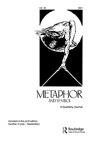Constructing a Broad Model for Proverb Understanding
IF 3.3
3区 文学
0 LANGUAGE & LINGUISTICS
引用次数: 0
Abstract
ABSTRACT Based on the view that “The meanings that we take most for granted are those where the complexity is best hidden”, the paper attempts to describe the complex cognitive operations at work in the process of proverb understanding. The main goal is to build up a model capable of accounting for how proverbs mean and how speakers within a speech community understand them the way they do. Such a model is not a completely new one; rather, it is built out of a number of already existing models, namely Conceptual Metaphor Theory, Great Chain Metaphor Theory, Stereotype Theory and Metaphoric Integration Theory. Each of these theories reduces to an individual ingredient which fulfills a specific task within the broad model as a whole. The broad model is applied to two case studies in order to indicate how it works in the case of proverbs with simple metaphorical structures and in proverbs with complex metaphorical potential.构建谚语理解的广义模型
摘要基于“我们认为最理所当然的含义是那些最能隐藏复杂性的含义”的观点,本文试图描述谚语理解过程中复杂的认知操作。主要目标是建立一个模型,能够解释谚语的含义,以及演讲社区中的演讲者如何理解谚语。这样的模型并不是一个全新的模型;相反,它是在已有的一些模型的基础上建立起来的,即概念隐喻理论、大链隐喻理论、刻板印象理论和隐喻整合理论。这些理论中的每一个都归结为一个单独的成分,它在整个广义模型中完成了特定的任务。将广义模型应用于两个案例研究,以表明它在具有简单隐喻结构的谚语和具有复杂隐喻潜力的谚语中是如何工作的。
本文章由计算机程序翻译,如有差异,请以英文原文为准。
求助全文
约1分钟内获得全文
求助全文
来源期刊

Metaphor and Symbol
Multiple-
CiteScore
2.90
自引率
0.00%
发文量
23
期刊介绍:
Metaphor and Symbol: A Quarterly Journal is an innovative, multidisciplinary journal dedicated to the study of metaphor and other figurative devices in language (e.g., metonymy, irony) and other expressive forms (e.g., gesture and bodily actions, artworks, music, multimodal media). The journal is interested in original, empirical, and theoretical research that incorporates psychological experimental studies, linguistic and corpus linguistic studies, cross-cultural/linguistic comparisons, computational modeling, philosophical analyzes, and literary/artistic interpretations. A common theme connecting published work in the journal is the examination of the interface of figurative language and expression with cognitive, bodily, and cultural experience; hence, the journal''s international editorial board is composed of scholars and experts in the fields of psychology, linguistics, philosophy, computer science, literature, and media studies.
 求助内容:
求助内容: 应助结果提醒方式:
应助结果提醒方式:


